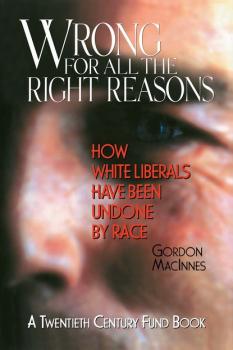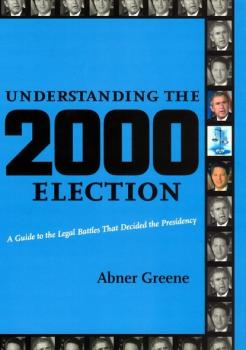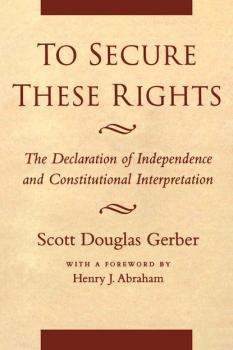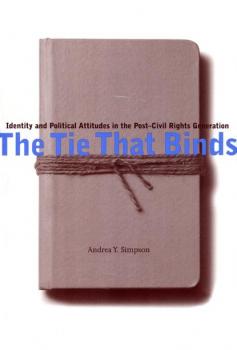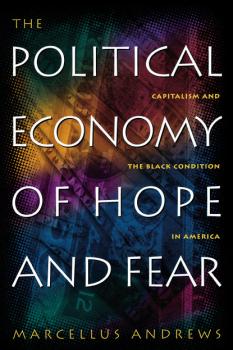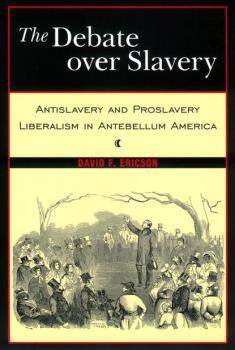ТОП просматриваемых книг сайта:
Социальная психология
Различные книги в жанре Социальная психология, доступные для чтения и скачиванияАннотация
There was a time, in this century, when liberals championed the working class, when Democrats were indisputably the party of those who worked rather than invested for a living. Today, however, most Americans have come to see liberals as drifting and aimless, somehow lacking in backbone and moral fiber, beholden to radical ideologies that have little to do with the average American's life. Few incidents cast this phenomenon into greater relief than George Bush's successful tarring of Michael Dukakis as a liberal in 1988–and, tellingly, Dukakis's subsequent flight from the liberal tradition. How has it come to this? Why have liberals allowed themselves to be so portrayed? In this book, Gordon MacInnes–state senator, fiscal conservative, frustrated Democrat, and a man who believes deeply in America's civic culture–reveals how progressive forces have retreated from the battle of ideas, at great cost. Squarely at the nexus of race, poverty, and politics, Wrong for All the Right Reasons charts the sources of liberal decline and the high costs of conservative rule. Tracing the origins of the liberal retreat to the fall-out over Senator Daniel Patrick Moynihan's report on the black family in the 1960s, MacInnes claims that white liberals have somewhere along the way stopped taking black people seriously enough to argue with them. Continuously put on the desfensive, liberals have been unable to forge an aggressive, proactive agenda of that addresses the needs of working-class and poor Americans. This has led to a breakdown of honest dialogue which to this day continues to plague liberal Democrats, as evidenced by Bill Bradley's withdrawal from active party politics last fall. Finding room for optimism in the groundswell of grass-roots progressivism, Wrong for All the Right Reasons is a timely, necessary call to arms for liberal, progressive Democrats, outlining ways in which they can reverse their party's dangerous decline.
Аннотация
The person with schizophrenia poses a formidable challenge even to the experienced clinician. Bizarre, unpredictable behavior, disordered thought patterns, peculiar, even unintelligible speech, and extreme distrust can drastically limit the clinician's ability to conduct therapy. It is often seemingly impossible to determine the cause of these behaviors: Are they a result of the disease, the side effects of drugs, or the patient's efforts to cope?In this brilliant and insightful book, Dr. Michael Selzer and his colleagues offer a radical new perspective on understanding and treating the schizophrenic person. What is often lacking, they argue, is a clear understanding of the patient's own experience of his world. Without a realistic appraisal of the patient's physiological and psychological vulnerabilities, the effect of various stresses on him, and his own unique adaptation to these circumstances, no effective drug or psychotherapeutic treatment intervention is possible.This thoughtful, intelligent, and acutely perceptive book is a major breakthrough for working with persons with schizophrenia. The authors have shown that therapy with the schizophrenic person is not only possible but highly rewarding.
Аннотация
Paperback Edition: Updated and with a New Foreword The nation will not soon forget the drama of the 2000 presidential election. For five weeks we were transfixed by the legal clashes that enveloped the country from election night to the Gore concession. It was instant history, and will be studied by historians, lawyers, political scientists, media critics and others for years to come.Even for those who followed the events most closely, the legal twists and turns of the post-election struggles seemed at times bewildering. We witnessed manual recounts of election ballots, GOP federal court lawsuits challenging those recounts, two Florida Supreme Court opinions, lawsuits over butterfly and absentee ballots, questions about the role of the Florida legislature and the United States Congress in resolving presidential election disputes, and two United States Supreme Court decisions, the second of which finally handed the election to Bush. Although the 2000 Presidency was decided through much legal wrangling, one should not have to be a lawyer to understand how we came to have Bush rather than Gore as our President in that hotly contested election. Understanding the 2000 Election offers an accessible, comprehensive guide to the legal battles that finally gave George W. Bush the Presidency five weeks after election night. Meant to stand next to and clarify the numerous journalistic and personal accounts of the election drama, Understanding the 2000 Election offers a offers a step-by-step, non-partisan explanation and analysis of the major legal issues involved in resolving the presidential contest. The volume also offers a clear overview of the Electoral College, its history, what would be involved in switching over to a direct election, and the likely future of the Presidential electoral process. While some still decry the 2000 election outcome as the result of political manipulation rather than the rule of law, Greene shows that almost every legal conclusion of the post-election struggle can be understood through the application of legal principle, rather than politics.
Аннотация
Torture is among the most disturbing and psychologically devastating of human behaviors. It dehumanizes its victims, leaving them with serious and lasting psychological wounds. Like other psychological trauma, torture frequently leaves in its wake denial and silence among both perpetrators and their victims. This communicative void creates a public and mental block that can make treatment of torture survivors very difficult. Treating Victims of Torture and Violence is the definitive manual for therapists treating victims of torture, prisoners of war, and casualties of forced migration. Divided into five sections dealing with basic concepts of torture–violence and aggression, the torture syndrome, psychotherapeutic treatment, the cultural psychology of torture syndrome, and cultural psychological treatment– Treating Victims of Torture and Violence employs both classic psychoanalytic and cognitive- behavioral methods. Realizing that torture victims are frequently from different cultures than those of their therapists, Peter Elsass provides in-depth aid to therapists dealing with a multicultural clientele.
Аннотация
To Secure These Rights enters the fascinating–and often contentious–debate over constitutional interpretation. Scott Douglas Gerber here argues that the Constitution of the United States should be interpreted in light of the natural rights political philosophy of the Declaration of Independence and that the Supreme Court is the institution of American government that should be primarily responsible for identifying and applying that philosophy in American life.Importantly, the theory advanced in this book–what Gerber calls liberal originalism–is neither consistently liberal nor consistently conservative in the modern conception of those terms. Rather, the theory is liberal in the classic sense of viewing the basic purpose of government to be safeguarding the natural rights of individuals. As Thomas Jefferson wrote in the Declaration of Independence, to secure these rights, governments are instituted among men. In essence, Gerber maintains that the Declaration articulates the philosophical ends of our nation and that the Constitution embodies the means to effectuate those ends. Gerber's analysis reveals that the Constitution cannot be properly understood without recourse to history, political philosophy, and law.
Аннотация
With 16 original essays all published here for the first time, Theory and Practice focuses on the relationship between philosophical tradition and everyday life in the Western tradition. In this comprehensive volume, Ian Shapiro and Judith Wagner DeCew have gathered contributions from some of the most influential thinkers of our generation including Cass Sunnstein, Jean Bethke Elshtain, Martha Nussbaum, Jeremy Waldron, and Kent Greenwalt. What are the relations between philosophical theories and everyday life? This question, as old as it is profound, is the central focus of Theory and Practice . The contributors include some of the most influential thinkers of our generation, among them Cass Sunnstein, Jean Bethke Elshtain, Martha Nessbaum, Jeremy Waldron, and Kent Greenwalt. In sixteen chapters–all published here for the first time—the authors examine major attempts to reconcile theory with practice in the Western tradition from Herodotus, Plato, and Aristotle to Kant and Heidegger. Considerable attention is devoted to the role of theory in judicial decision-making, debates between defenders of the value of pure theory and those who argue for the priority of practice, the political implications of theory, practical problems such as global warming, and the theoretical commitments of practitioners from Karl Marx to Vaclav Havel. One of the most expansive volumes in the NOMOS series to date, Theory and Practice will be of interest to philosophers, lawyers, and social scientists from a wide range of disciplines.
Информация о книге
Автор произведения Группа авторов
Серия NOMOS - American Society for Political and Legal Philosophy
Аннотация
What does it mean to be black in a nation increasingly infatuated with colorblindness? In The Tie That Binds , Andrea Y. Simpson seeks to answer this crucial question through the prism of ethnic and political identification. Historically, African Americans have voted overwhelmingly Democratic in governmental elections. In recent years, however, politically conservative blacks–from Clarence Thomas to Louis Farrakhan to Ward Connerly–have attracted much of the media's gaze. What is the nature of black conservatives' constituency, and is it as strong and numerous as conservatives would have us believe? To what extent, if at all, does black conservatism stem from a weakened sense of collective racial identity? Simpson tackles the peculiar institution of black conservatism by interviewing college students to determine their political attitudes and the ways in which these are shaped. The result is a penetrating interrogation of the relations between political affiliation, racial identity, and class situation.
Аннотация
Popular liberal writing on race has relied on appeals to the value of «diversity» and the fading memory of the Civil Rights movement to counter the aggressive conservative assault on liberal racial reform generally, and on black well-being, in particular. Yet appeals to fairness and justice, no matter how heartfelt, are bound to fail, Marcellus Andrews argues, since the economic foundations of the Civil Rights movement have been destroyed by the combined forces of globalization, technology, and tight government budgets. The Political Economy of Hope and Fear fills an important intellectual gap in writing on race by developing a hard-nosed economic analysis of the links between competitive capitalism, racial hostility, and persistent racial inequality in post-Civil Rights America. Andrews speaks to the anger and frustration that blacks feel in the face of the nation's abandonment of racial equality as a worthy objective by showing how the considerable difficulties that black Americans face are related to fundamental changes in the economic fortunes of the U.S. The Political Economy of Hope and Fear is an economist's plea for unsentimental thinking on matters of race to replace the mixture of liberal hand wringing and conservative mythmaking that currently passes for serious analysis about the nation's racial predicament.
Аннотация
Frederick Douglass and George Fitzhugh disagreed on virtually every major issue of the day. On slavery, women's rights, and the preservation of the Union their opinions were diametrically opposed. Where Douglass thundered against the evils of slavery, Fitzhugh counted its many alleged blessings in ways that would make modern readers cringe. What then could the leading abolitionist of the day and the most prominent southern proslavery intellectual possibly have in common? According to David F. Ericson, the answer is as surprising as it is simple; liberalism. In The Debate Over Slavery David F. Ericson makes the controversial argument that despite their many ostensible differences, most Northern abolitionists and Southern defenders of slavery shared many common commitments: to liberal principles; to the nation; to the nation's special mission in history; and to secular progress. He analyzes, side-by-side, pro and antislavery thinkers such as Lydia Marie Child, Frederick Douglass, Wendell Phillips, Thomas R. Dew, and James Fitzhugh to demonstrate the links between their very different ideas and to show how, operating from liberal principles, they came to such radically different conclusions. His raises disturbing questions about liberalism that historians, philosophers, and political scientists cannot afford to ignore.

